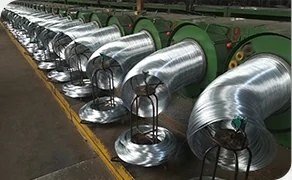 TEL:
+86-13102802206
TEL:
+86-13102802206
 Email:
fencenetting@china.com
Email:
fencenetting@china.com
 Language
Language
 TEL:
+86-13102802206
TEL:
+86-13102802206
 Email:
fencenetting@china.com
Email:
fencenetting@china.com
 Language
Language


The Intersection of Farm and Urban Life Barbed Wire and Its Symbolism
Barbed wire, a seemingly simple invention, holds profound significance in both rural and urban settings. Originally designed to confine livestock and protect crops, this utilitarian material has transcended its initial purpose, representing broader themes of division, security, and even conflict. In exploring the relationship between farming communities and urban environments through the lens of barbed wire, we uncover deeper insights into societal structures and values.
Historical Context
Barbed wire was patented in the late 19th century and quickly became a staple in American agricultural practices. Farmers embraced it as an effective means to create boundaries and prevent cattle from straying. This innovation revolutionized farming, enabling the efficient management of larger tracts of land and marking the beginning of modern agricultural practices. Before its widespread use, maintaining livestock and protecting crops entailed considerable labor and resources. Barbed wire offered a solution that transformed rural landscapes and agricultural efficiency.
However, as cities began to expand and encroach upon rural areas, the presence of barbed wire took on new connotations. It became a symbol of the divide between the pastoral life of farmers and the burgeoning urban environments. The wire showcased a literal and metaphorical barrier between the two worlds, often leading to tensions over land use, resources, and identity.
The Intersection of Farm and Urban Life Barbed Wire and Its Symbolism
In many ways, barbed wire embodies the conflict inherent in the relationship between rural and urban life. For farmers, it signifies protection and the hard-fought sovereignty over land that has been in their families for generations. For urban dwellers, it often represents exclusion and a disconnect from the natural world. This divide is particularly evident in issues of land development and agricultural policy, where urban expansion frequently threatens agricultural land, leading to disputes that showcase differing priorities and perspectives.

Moreover, barbed wire serves as a visual reminder of social and economic disparities. In urban areas, those who live on the peripheries may resort to using barbed wire to protect their homes from crime, highlighting a sense of vulnerability in the face of societal changes. Conversely, in rural areas, it reflects the struggles of farmers trying to maintain their livelihoods amidst challenges posed by urban encroachment and industrialization.
Cultural Impact
Culturally, barbed wire appears in various forms of artistic expression, symbolizing both confinement and protection. It has inspired countless works of literature, music, and visual arts that probe the themes of isolation and community. Artists and writers juxtapose images of barbed wire with pastoral scenes to illustrate the tensions between protection of land and the encroachment of modernity.
Additionally, barbed wire has a contentious history beyond rural and urban landscapes. Its use in military contexts and detention facilities paints a darker picture of confinement and control. This duality in representation invites a discussion about freedom, belonging, and the human condition in the face of societal constructs.
Conclusion
In conclusion, barbed wire serves as more than just a tool for farming; it is a powerful symbol that encapsulates the complexities of the relationship between rural and urban life. As we navigate the challenges of land use, identity, and community in an ever-evolving world, understanding the history and implications of barbed wire can provide valuable insights. This simple yet evocative material encourages us to reflect on our connections to land, community, and the boundaries we create—both physical and metaphorical. In a world increasingly marked by division, it is essential to find ways to bridge the gaps that barbed wire so starkly highlights.